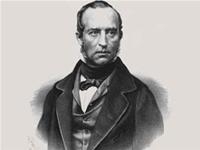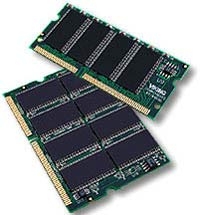The following 10 stories, each unique, not only shape the “joy, anger, love, and sadness” of the global IT landscape in 2005 but also forecast larger trends for 2006. This selection comes from IDG News.
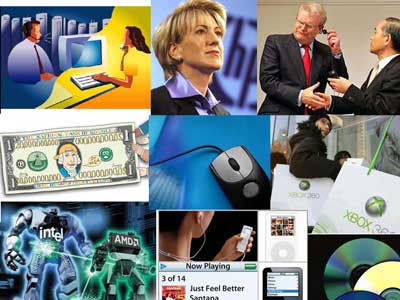
1. Oracle Acquires Siebel
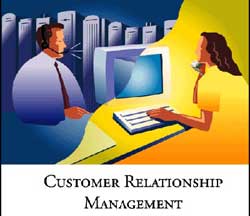 The enterprise application market has now become a two-horse race between Oracle and SAP AG. Following its “bitter” acquisition of PeopleSoft for $10.3 billion in January, Oracle set its sights on Siebel Systems. In September, Oracle announced its intention to acquire the customer relationship management (CRM) software company for $5.85 billion. Like PeopleSoft, Siebel was once a leader in the enterprise software market but struggled against fierce competition from newer challengers.
The enterprise application market has now become a two-horse race between Oracle and SAP AG. Following its “bitter” acquisition of PeopleSoft for $10.3 billion in January, Oracle set its sights on Siebel Systems. In September, Oracle announced its intention to acquire the customer relationship management (CRM) software company for $5.85 billion. Like PeopleSoft, Siebel was once a leader in the enterprise software market but struggled against fierce competition from newer challengers.
The trend of mergers and acquisitions, especially by Oracle, was hot throughout 2005, affecting both IT and telecommunications. Notable examples include SBC Communications acquiring AT&T, Cisco Systems buying Scientific-Atlanta, and the high-profile acquisition of Skype Technologies by eBay.
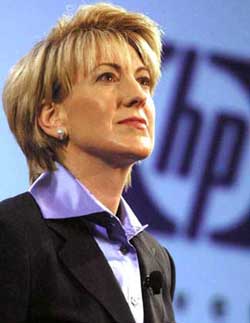 2. HP “Bites the Hand That Feeds It,” Fires Fiorina
2. HP “Bites the Hand That Feeds It,” Fires Fiorina
Hewlett-Packard’s firing of CEO Carly Fiorina in February shocked the world. It also represented a bitter acknowledgment that the strategy HP had pursued for years (culminating in its merger with Compaq) was completely ineffective.
Despite opposition, Fiorina spent heavily to acquire Compaq, knowing that merely breaking even in the PC business was a challenge. She believed that by selling complete hardware solutions to enterprise customers, HP could boost its server and service sales. However, three years post-acquisition, the company’s financial situation remained stagnant. Her successor, former NCR President and CEO Mark Hurd, initiated no major reforms but laid off at least 15,000 HP employees.
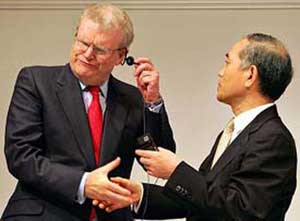 3. Sony Appoints Its First Foreign CEO
3. Sony Appoints Its First Foreign CEO
In March 2005, Sony Corporation dismissed Nobuyuki Idei and appointed Howard Stringer as the new chairman and CEO.
This marked the first time a foreigner held such power within this empire, signaling a significant shift: Sony would fully transition from analog devices to digital technology.
4. The Google Effect
 If Google’s initial public offering (IPO) was a “top story” in 2004, this year the company made history by surpassing Time Warner to become the most valuable media company in the world. In June 2005, its stock price exceeded $400, far surpassing competitors like Yahoo and Microsoft (which hovered around $350). This achievement rewarded Google for possessing the most optimal search technology on the market and excelling in ad revenue. However, Google faced some setbacks, including security vulnerabilities in new services and hasty launches that required temporary closures. Nevertheless, with the rising trend of “Webification” and “online services,” Google stood at the forefront.
If Google’s initial public offering (IPO) was a “top story” in 2004, this year the company made history by surpassing Time Warner to become the most valuable media company in the world. In June 2005, its stock price exceeded $400, far surpassing competitors like Yahoo and Microsoft (which hovered around $350). This achievement rewarded Google for possessing the most optimal search technology on the market and excelling in ad revenue. However, Google faced some setbacks, including security vulnerabilities in new services and hasty launches that required temporary closures. Nevertheless, with the rising trend of “Webification” and “online services,” Google stood at the forefront.
5. Web 2.0: The Realization of Software Webification
 The dot-com crisis is fading into history. The Internet has emerged as a new platform, enabling software and desktop services to be provided as a new business model—this is the world of Web 2.0. Google is leading this trend: users receive free services, while advertisers pay.
The dot-com crisis is fading into history. The Internet has emerged as a new platform, enabling software and desktop services to be provided as a new business model—this is the world of Web 2.0. Google is leading this trend: users receive free services, while advertisers pay.
For enterprise customers, the idea of using web-based software, charging per user, is becoming increasingly popular. IT giants like IBM and Sun Microsystems are offering new, on-demand, and flexible services. Microsoft launched its “Live” service in early November, vowing to web-enable both Windows and the latest version of Office.
6. Xbox 360 Creates a Buzz
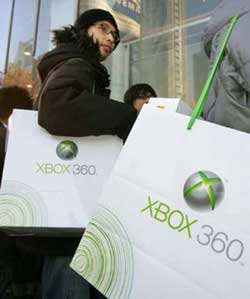 The official release of Xbox 360 marked an unforgettable milestone in global technology in 2005. Prior to its launch, every move by Microsoft, even a simple sneeze, was closely monitored by the world. Not Windows, not Office—the launch of Xbox 360 was the most anticipated event of the year from Bill Gates’ empire. Everyone acknowledged that the graphics quality of Xbox 360 represented a significant leap compared to previous Xbox versions and Sony’s PlayStation 2. Therefore, prepare for a fierce battle when Sony releases the PSP3 in 2006.
The official release of Xbox 360 marked an unforgettable milestone in global technology in 2005. Prior to its launch, every move by Microsoft, even a simple sneeze, was closely monitored by the world. Not Windows, not Office—the launch of Xbox 360 was the most anticipated event of the year from Bill Gates’ empire. Everyone acknowledged that the graphics quality of Xbox 360 represented a significant leap compared to previous Xbox versions and Sony’s PlayStation 2. Therefore, prepare for a fierce battle when Sony releases the PSP3 in 2006.
Remember, Xbox 360 is not just a gaming device. To Microsoft, it is the foundation of a “digital home” for the future—imagine a space around you transformed into a digital entertainment world, immersed in music, videos, and online entertainment.
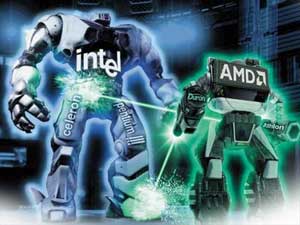 7. Titans Clash: AMD Sues Intel
7. Titans Clash: AMD Sues Intel
In June, AMD filed an antitrust lawsuit in federal court, accusing Intel of abusing its dominant market position concerning AMD’s chip sales. Accompanying the lawsuit was a high-profile PR campaign against Intel. More importantly, AMD seems to have won the first round in the dual-core chip battle against Intel, as the market perceives its products to have better performance. AMD’s retail market share is also on the rise. Asia has become a new battleground for the two giants, especially in China and India, which are receiving enthusiastic support.
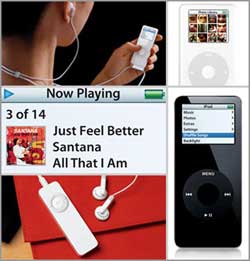 8. Apple Continues to Shine:
8. Apple Continues to Shine:
The launch of the iPod in 2001 was truly a miraculous turning point: it propelled Apple from struggling to soaring to “glory” in an instant. A trendy music player paired with an attractive paid digital music service opened wide the doors for Apple. Continuing to captivate users with the introduction of the iPod Nano in September, Apple reported an unprecedented fiscal quarter in its history. The success of the iPod also benefited Mac computers, with Apple shipping 1.23 million Macs in Q4 this year.
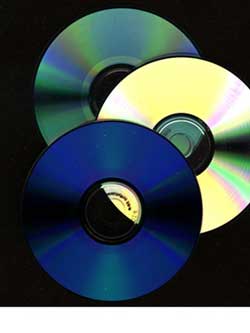 9. Sony and the Rootkit Nightmare
9. Sony and the Rootkit Nightmare
In the first week of November, Sony BMG began to face the first blows. The global press uncovered that the company’s CDs contained copy protection software without informing customers. The situation worsened when it was revealed that this software utilized rootkit technology, commonly exploited by spyware and viruses.
The more Sony attempted to placate enraged users, the deeper it sank into its mistakes. The patch it released (to make the rootkit visible to antivirus programs) was discovered to potentially harm Windows systems.
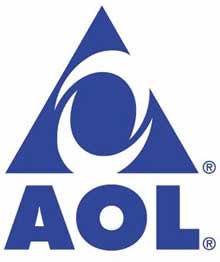 10. AOL – What Lies Ahead?
10. AOL – What Lies Ahead?
Reports indicate that Time Warner has been in tense negotiations throughout the year regarding AOL’s future, including the possibility of a complete fire sale (AOL merged with Time Warner in January 2001). However, as 2005 drew to a close, the idea of “partnership” gained traction: potential collaborations with Microsoft’s MSN search engine or strengthening advertising ties with Google, which provides search technology for AOL, were on the table.
The uncertainty surrounding AOL’s future reflects a reality: by the middle of the first decade of the 21st century, the online sector is becoming polarized into two camps: one of companies successfully monetizing search and web services, and the other of those reluctant to wade into murky waters.
Cầm Thi









































